Key takeaways
- Project-Based Learning (PBL) emphasizes real-world problems, fostering active student engagement and deeper understanding through inquiry and collaboration.
- Integrating activist teaching principles enhances students’ sense of agency and critical thinking by connecting curriculum to societal issues, encouraging open dialogue.
- Effective lesson planning for PBL involves identifying meaningful challenges, balancing structure with freedom, and allowing for diverse learning pathways to cater to all students.
- Ongoing reflection on lesson designs helps educators adjust their methods to better engage students and maintain an activist spirit in the classroom.
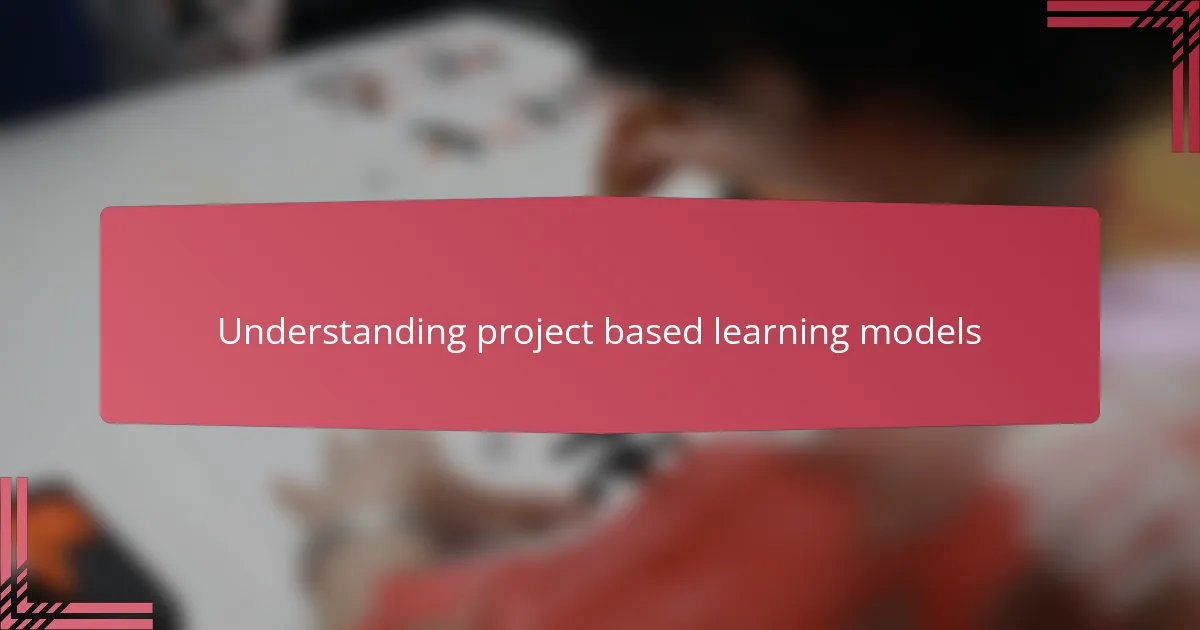
Understanding project based learning models
Project-Based Learning (PBL) models center on the idea that students learn best when they are actively involved in real-world problems. From my experience, shifting the focus from rote memorization to hands-on projects transformed my classroom dynamics completely. Have you ever noticed how students light up when they realize their work connects to something meaningful beyond textbooks?
What struck me most about PBL is its emphasis on inquiry and collaboration. Instead of delivering information directly, I found myself stepping back and facilitating conversations, encouraging students to ask questions and explore solutions together. I wondered, could this be the key to fostering deeper understanding and genuine engagement?
In practice, PBL requires careful planning to balance guiding students while allowing autonomy. I learned that designing lessons around authentic challenges—not just arbitrary tasks—makes a significant difference. When students see their efforts contributing to a larger purpose, their motivation and creativity soar, turning learning into an empowering experience rather than a chore.
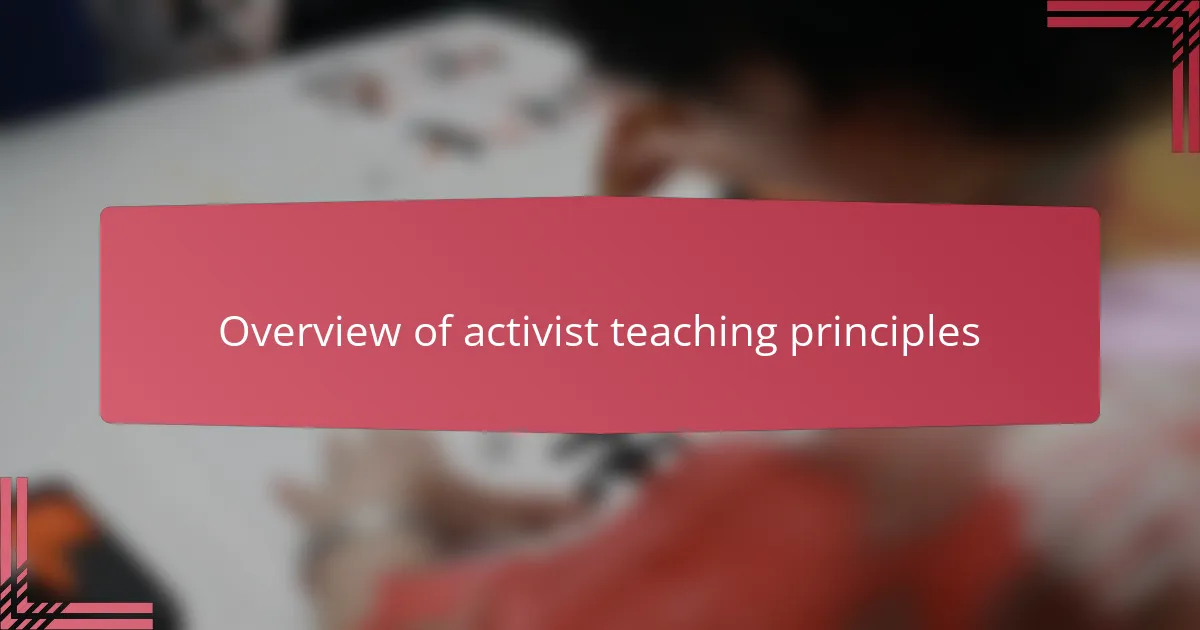
Overview of activist teaching principles
Activist teaching principles, to me, revolve around creating learning experiences that empower students to question and challenge societal issues. It’s not just about knowledge; it’s about nurturing critical thinking and a sense of agency. Have you ever felt that spark when a student begins to see themselves as a changemaker rather than just a learner?
What I find powerful is how these principles push us to connect curriculum with real-world struggles, making education a tool for justice. This approach calls for vulnerability in the classroom—acknowledging complexity and encouraging open dialogue. When I started integrating these ideas, I noticed the classroom energy shift; discussions became more authentic and “alive.”
At times, it’s challenging to balance activist goals with curriculum demands, but the reward lies in witnessing students take ownership of their learning and their role in society. I often reflect on whether I’m providing enough space for their voices to emerge, and that thought guides how I design each lesson. Isn’t that the essence of teaching for social change?
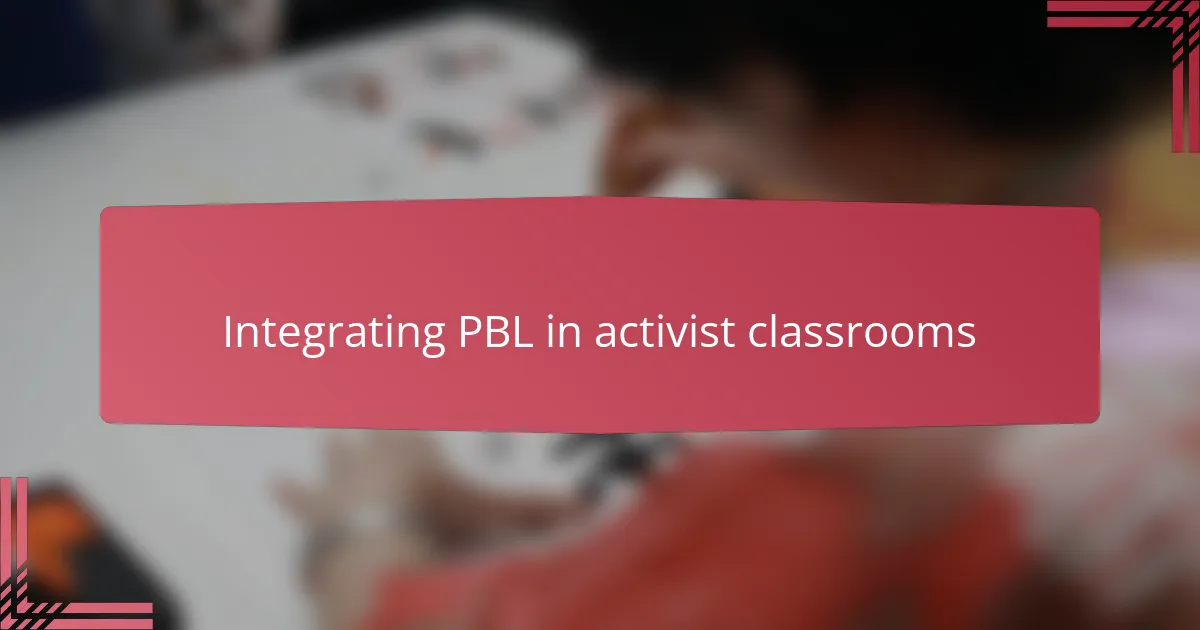
Integrating PBL in activist classrooms
Integrating PBL in activist classrooms naturally felt like a perfect fit for me because both seek to empower students through meaningful engagement. I remember one project where students explored local environmental justice issues—they weren’t just learning facts; they were investigating real problems that affected their own neighborhoods. Doesn’t that kind of connection fuel a deeper passion for learning and activism?
Sometimes, I had to rethink traditional roles—stepping back as the “sage” and stepping up as a guide—so students could take ownership of their inquiries and solutions. The challenge was trusting their ideas, even when they diverged from what I initially envisioned. Yet, witnessing their confidence grow as they crafted projects that challenged social norms convinced me this was the right path.
I often wonder: How can we ensure that PBL doesn’t just become another checklist but truly cultivates critical consciousness? For me, it’s about weaving activist principles into every stage of the project—asking tough questions, reflecting on power dynamics, and celebrating student voices. That intentional integration transformed my classroom into a vibrant space of learning and social change.
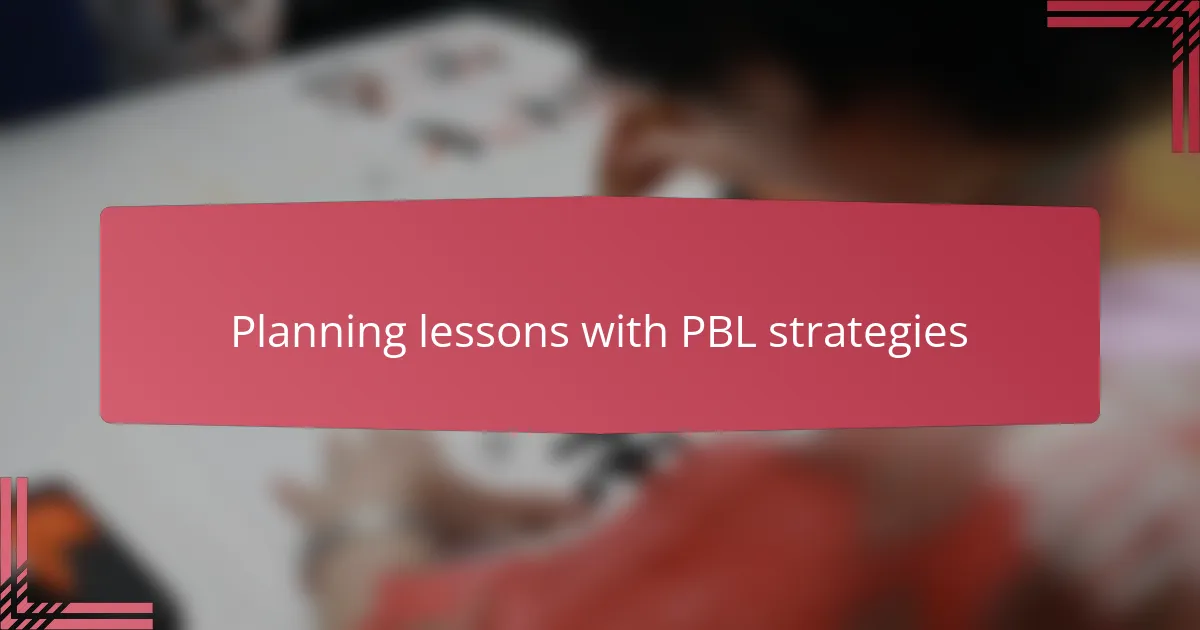
Planning lessons with PBL strategies
Planning lessons with PBL strategies always starts with identifying a meaningful, real-world problem that resonates with my students. I remember struggling at first to narrow down broad topics into manageable projects, but once I focused on clear, actionable challenges, the lessons came alive. Have you noticed how a well-chosen project question can spark curiosity and drive deeper investigation?
I also think carefully about the balance between structure and freedom. In early attempts, I was tempted to over-script the lessons, which stifled student creativity. Now, I deliberately design milestones and checkpoints that guide the process without constraining exploration, giving students room to take ownership while staying on track.
Another key step for me is embedding opportunities for collaboration and reflection within the lesson plans. I’ve seen how regular peer discussions and self-assessment moments help students refine their thinking and stay connected to the project’s purpose. What’s interesting is how these strategies don’t just support learning—they build a classroom culture rooted in mutual respect and shared goals.
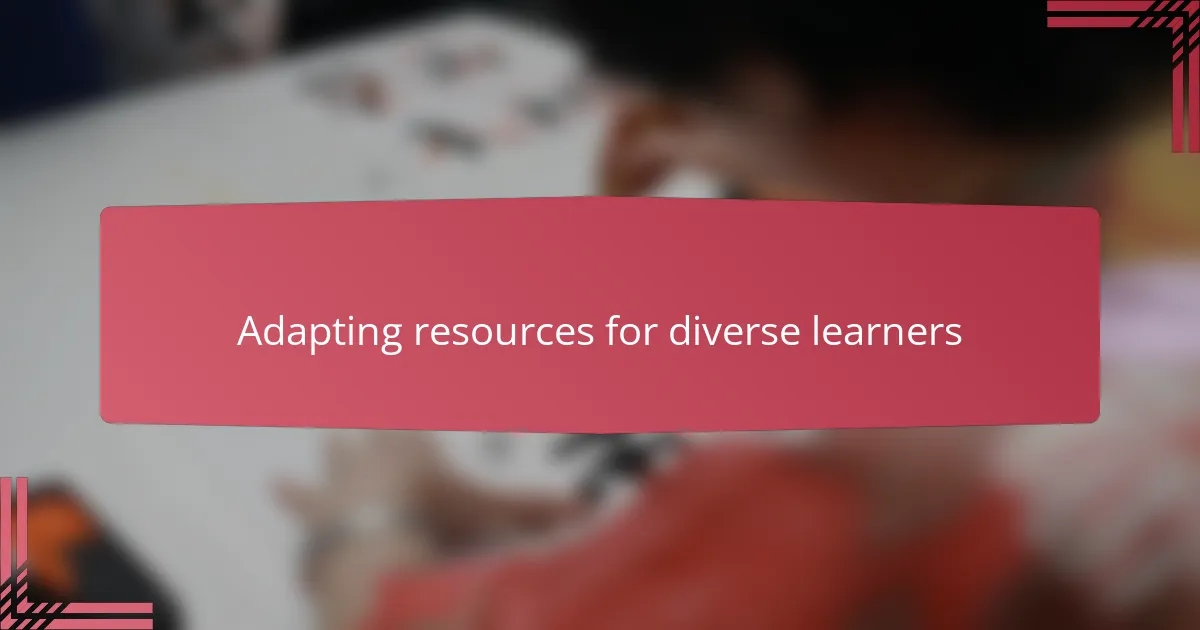
Adapting resources for diverse learners
Adapting resources for diverse learners always feels like walking a fine line between challenge and possibility. I’ve often found that what works brilliantly for one student might leave another frustrated or disengaged. How do we honor those differences without diluting the project’s core? For me, the answer lies in flexible materials and multiple entry points—whether that’s offering texts at varied reading levels or providing options for visual, auditory, or hands-on engagement.
I recall a project where some students thrived creating digital presentations, while others needed more tactile, kinesthetic experiences to really grasp the content. Offering those varied pathways wasn’t about extra work; it was about recognizing and valuing different ways of knowing. When I made those adaptations, I saw a noticeable shift: students who had been quiet suddenly became leaders, and those hesitant to share found their unique voices.
Isn’t it crucial to remember that adapting resources isn’t just about accessibility—it’s about equity? I try to build in scaffolds that support growth without lowering expectations, like chunking assignments or using graphic organizers. These strategies help all learners feel capable and confident, which to me, is the heart of meaningful education.
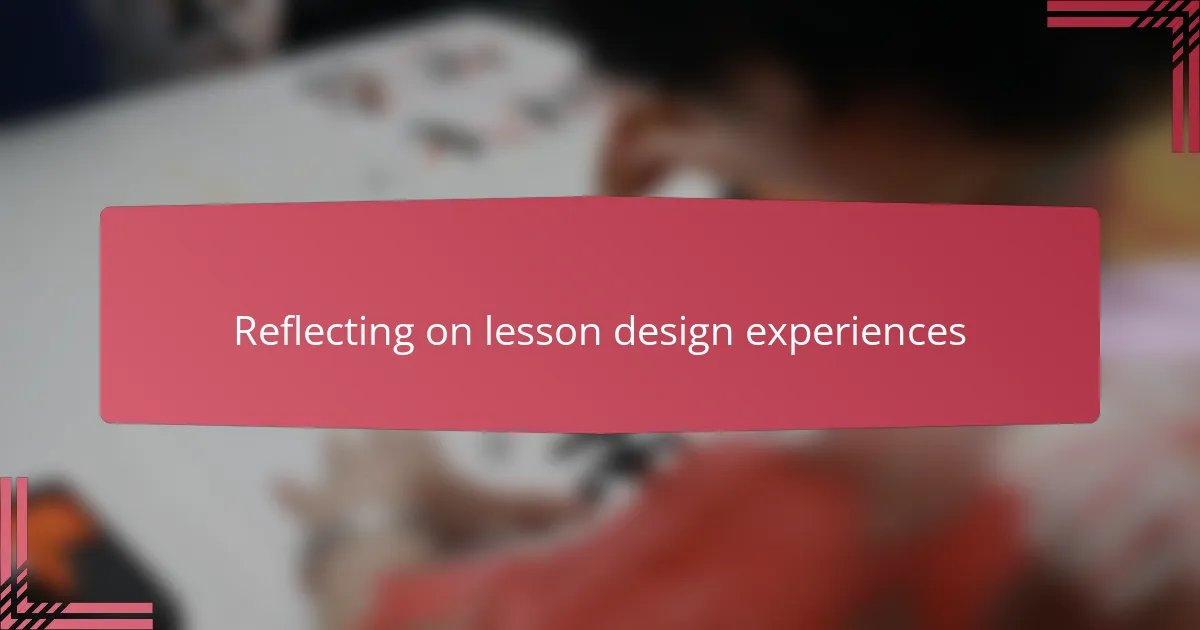
Reflecting on lesson design experiences
Reflecting on my experiences designing lessons around PBL, I often find myself revisiting moments when a project either soared or stumbled. Why did one lesson ignite student’s curiosity while another fell flat? These reflections have become a crucial part of my growth as a teacher, pushing me to ask deeper questions about student engagement and the authenticity of the challenges I present.
I remember a time when I felt frustrated because a project didn’t spark the level of collaboration I hoped for. Looking back, I realized I hadn’t truly given students ownership—the tasks were too structured, too “teacher-proof.” That experience taught me the importance of balancing guidance with freedom, and it reshaped how I structure my lessons moving forward.
Do I ever feel satisfied with a lesson design? Rarely, because each reflection reveals new layers to consider—from cultural relevance to how I frame student roles. But it’s this ongoing process of reflection that keeps my lessons alive and ensures they continue to serve not just academic goals but also the activist spirit I strive to cultivate in my classroom.
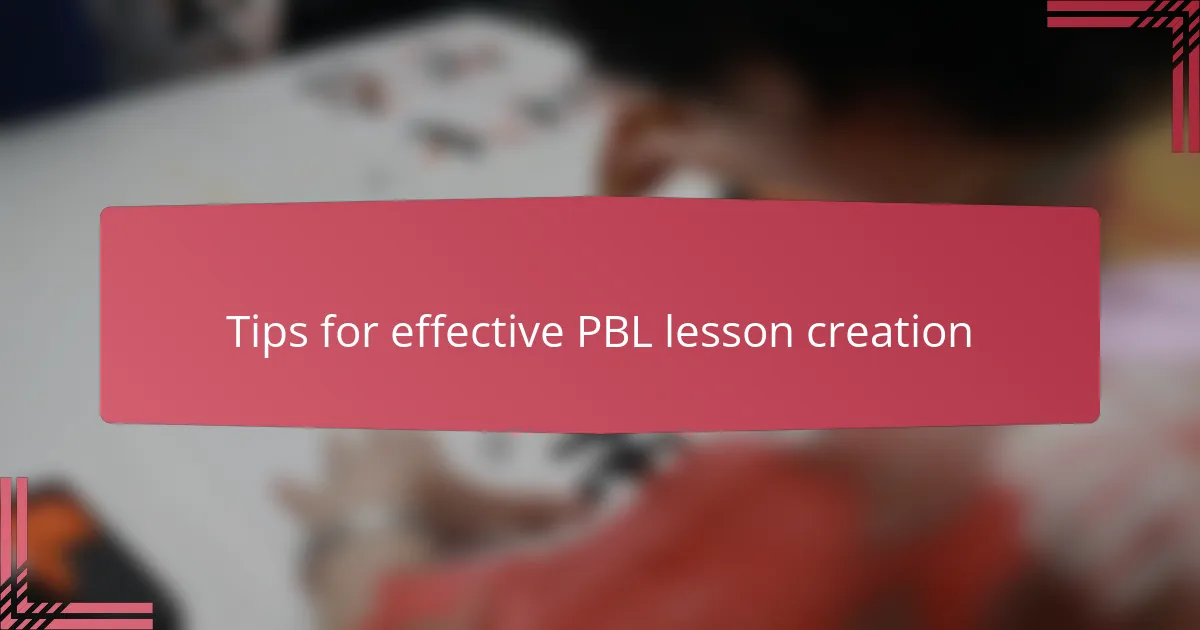
Tips for effective PBL lesson creation
Creating effective PBL lessons starts with clarity—defining a compelling driving question that hooks students right away. I’ve found that when the question feels urgent and connected to students’ lived experiences, their curiosity naturally deepens. Have you noticed how the right question can transform a group of reluctant learners into passionate investigators overnight?
Another tip is to build in checkpoints that don’t feel like micromanagement but rather serve as gentle waypoints for students to reflect and recalibrate. Early on, I struggled with finding that sweet spot between too much control and too little direction. Over time, I learned that thoughtful scaffolding keeps momentum going and helps students feel supported without stifling their creative problem-solving.
Lastly, don’t underestimate the power of weaving collaboration and reflection seamlessly into every phase of the project. In my classroom, these moments have become the heartbeat of PBL, where students not only share ideas but also wrestle with their own assumptions. Have you experienced how peer dialogue can unlock new perspectives that a teacher alone might never spark?